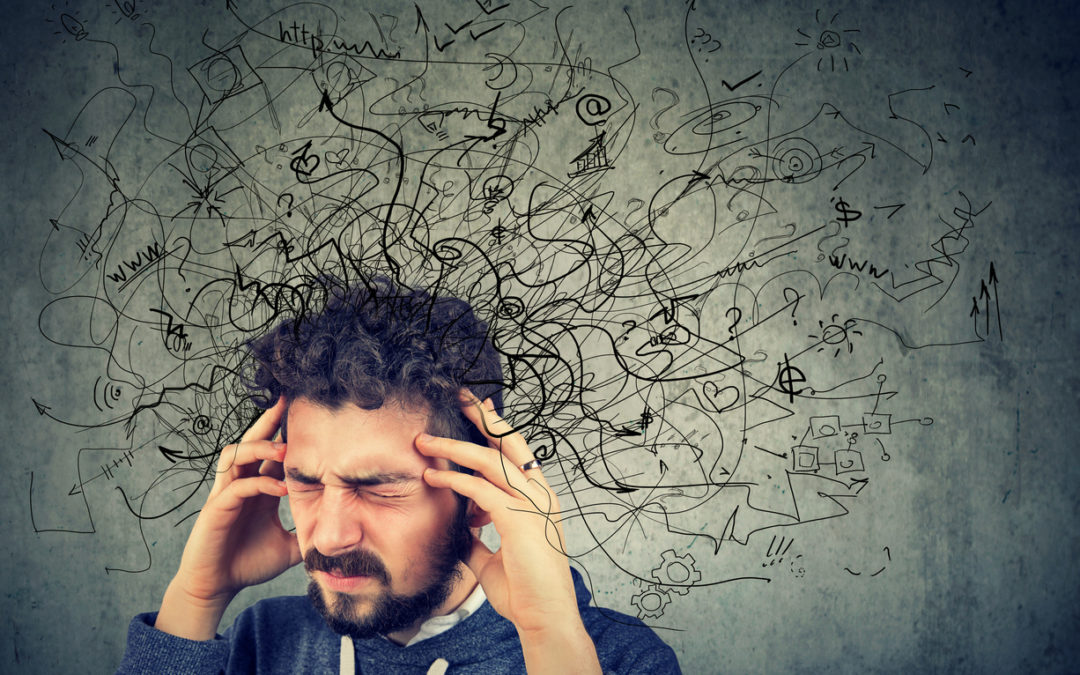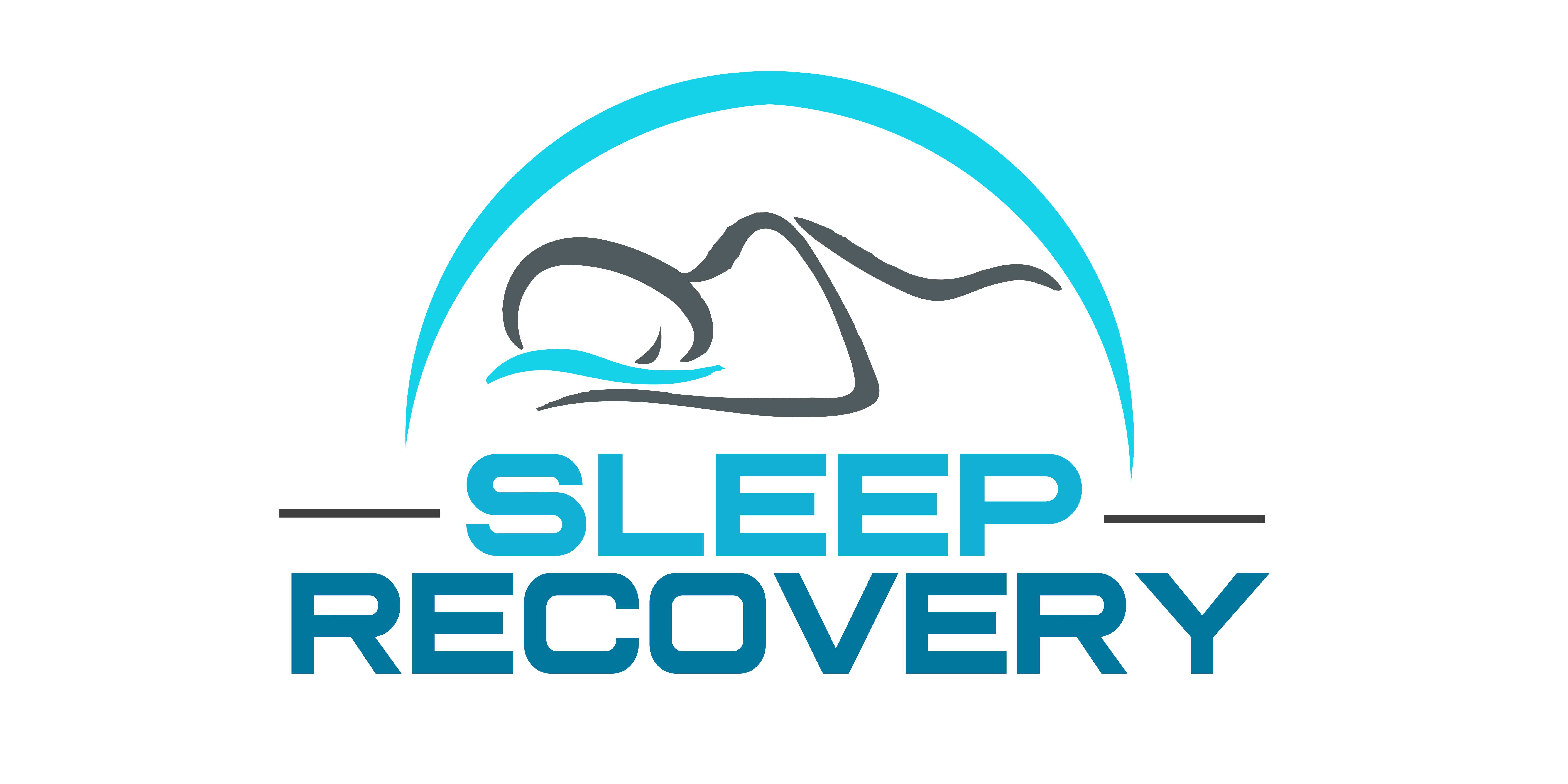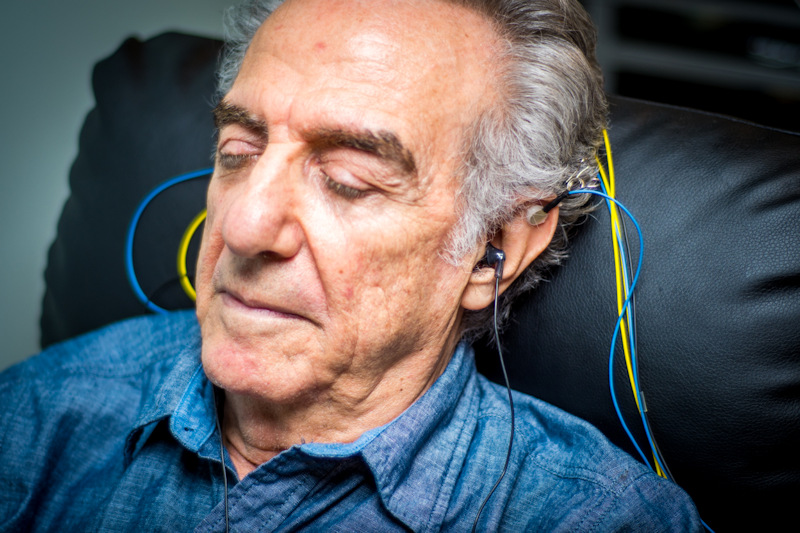Can Bad Sleep Cause Migraines? How Insomnia Rewires Pain Perception

Anyone who’s ever dealt with migraines knows the cruel irony: you need sleep to recover from a migraine, but migraine pain makes it nearly impossible to sleep well. What researchers are discovering now makes this relationship even more frustrating. Poor sleep doesn’t just make existing migraines worse—it changes how your brain perceives pain, making you more vulnerable to future attacks.
But here’s where things get interesting. New research is showing exactly what happens in the migraine brain when sleep gets disrupted, and emerging therapies are using this knowledge to break the vicious cycle through direct brainwave intervention.
The Science Behind Sleep-Deprived Pain Processing
A groundbreaking study from the Norwegian University of Science and Technology finally gave us a clear picture of what happens inside the heads of migraine sufferers when they don’t get enough sleep. Researchers hooked up 140 people to EEG machines and deliberately restricted their sleep for two nights, then measured how their brains responded to painful stimuli.
The results were striking. When people with migraines were sleep-deprived, their brains showed dramatically different electrical responses to pain compared to healthy individuals. Specifically, the brain mechanisms that usually dampen pain signals became less effective after poor sleep.
Dr. Petter Moe Omland, who led the research, said, “The mechanisms that are supposed to reduce pain do not work quite as well in people who do not have migraines. The pain is not dampened as much as in healthy people.”
This research is particularly compelling because the study participants sacrificed their sleep for science twice. Everyone was examined after regular sleep and again after two nights of restricted sleep while researchers measured their brain activity using laser and electrical pain stimulation. None of it was dangerous, but it was uncomfortable, especially for people already dealing with chronic pain conditions.
The EEG recordings showed that sleep deprivation explicitly affects something called “cortical inhibition,” the brain’s ability to turn down pain signals before they become conscious sensations. In migraine sufferers, this natural pain-dampening system becomes even more impaired when sleep is poor.
Why Sleep Loss Hits Migraine Brains Differently
The relationship between sleep and migraines isn’t just about being tired and making everything feel worse. Sleep deprivation triggers measurable changes in brain wave patterns that make migraine sufferers more vulnerable to pain.
During healthy sleep, your brain cycles through different electrical patterns that serve specific restoration functions. Deep sleep, characterized by slow delta waves, is when your brain clears out inflammatory proteins and resets neural networks. With its characteristic fast brain waves, REM sleep processes emotional memories and regulates neurotransmitter systems.
When sleep gets disrupted, these restoration processes become incomplete. For migraine sufferers, this incomplete restoration has dire consequences because their brains are already hypersensitive to environmental stimuli.
The Norwegian study found that sleep-restricted migraine patients showed increased “habituation” to electrical pain stimuli—meaning their brains became less responsive to repeated pain signals over time. While this might sound good, it suggests that their pain processing systems were becoming dysregulated and unreliable.
Dr. Omland himself experienced this firsthand. Despite not having migraines when he started studying them, he began developing severe nighttime migraine attacks during a period when he was sleeping very little while working as a doctor, researcher, and caring for small children. “My brain obviously couldn’t stand sleeping so little for a long time,” he explained. The personal experience became extra motivation to understand the mechanisms better.
The Autonomic Nervous System Connection
The sleep-migraine relationship is made even more complex by how it affects the autonomic nervous system. This unconscious control center manages heart rate, blood pressure, breathing, and other vital functions. Poor sleep disrupts autonomic balance, and migraine attacks often involve significant autonomic symptoms like nausea, sensitivity to light and sound, and changes in blood flow.
Recent research has identified specific patterns of autonomic dysfunction in migraine sufferers that get worse with sleep deprivation. Heart rate variability, which measures how well your autonomic system adapts to different situations, typically decreases after poor sleep. In people prone to migraines, this autonomic inflexibility may contribute to their increased vulnerability to triggers.
The brain centers controlling sleep, pain processing, and autonomic function are all closely interconnected. When sleep gets disrupted, it creates a cascade of changes throughout these systems that can culminate in migraine attacks. Understanding these connections has opened up new possibilities for treatment approaches that work with the brain’s electrical activity rather than just targeting symptoms.
Enter Brainwave Balancing Technology
While the Norwegian research was showing us how sleep deprivation damages pain processing in migraine brains, scientists at Wake Forest School of Medicine were developing a completely different approach to the problem. Instead of trying to manage migraine symptoms with medications, they started working directly with the brain’s electrical patterns.
The technology they developed is called HIRREM (High-resolution, Relational, Resonance-based, Electroencephalic Mirroring), though it’s also known commercially as Brainwave Optimization. The basic idea is elegantly simple: use real-time brain electrical activity monitoring to create musical tones that reflect the brain’s current state, then play those tones back to help the brain recognize and correct its imbalances.
During a HIRREM session, patients sit in a comfortable chair with EEG sensors on their scalps. A computer analyzes their brain wave patterns in real-time, identifying the dominant frequencies at each moment. Mathematical algorithms convert these electrical patterns into musical tones played back through headphones.
The theory is that when people hear tones that reflect their brain activity, their brains can recognize the patterns and begin to self-correct toward more balanced, healthy oscillations. It’s like giving the brain a mirror to see its electrical activity and adjust accordingly.
Clinical Results That Surprised Researchers
When Wake Forest researchers tested HIRREM on 52 adults with migraines, using about 16 sessions over nine days, participants reported significant improvements in their headache symptoms. The results were encouraging enough to continue studying the technology for various conditions.
But the migraine findings were just part of a larger picture. In studies testing HIRREM for other conditions, researchers consistently found improved sleep quality, even when sleep wasn’t the primary treatment target.
In a controlled trial for insomnia involving 107 adults, HIRREM produced dramatic results. Participants who received real brainwave-linked tones showed an average 7-point reduction on the Insomnia Severity Index, moving from moderate-to-severe insomnia into the “no insomnia” or “sub-threshold insomnia” categories. Just as importantly, these sleep improvements lasted for months after the treatment ended.
The benefits for the autonomic nervous system were equally impressive. People who received HIRREM showed significant improvements in heart rate variability and baroreflex sensitivity, measures of how well the autonomic system responds to changing conditions. These improvements suggest that brainwave balancing affects the same autonomic systems disrupted in sleep disorders and migraines.
Dr. Charles Tegeler, who chairs the neurology department at Wake Forest, emphasized the foundational importance of sleep: “Sleep is foundational for optimal health, healing, and well-being.” The HIRREM research suggests that addressing sleep problems through brainwave balancing might provide benefits beyond better rest.
How Brainwave Therapy Addresses Root Causes
What makes HIRREM different from traditional migraine treatments is that it works with the brain’s electrical activity rather than trying to override it with medications. Migraines are increasingly understood as disorders of brain wave regulation, so interventions that help restore standard electrical patterns make theoretical sense.
The technology is designed to detect imbalances between the left and right sides of the brain, which can reflect problems with autonomic nervous system regulation. When brain hemispheres aren’t working in proper coordination, it can contribute to the kind of neural instability that makes people vulnerable to migraines.
HIRREM teaches the brain to recognize and correct misaligned EEG patterns. By providing real-time auditory feedback about the brainwave activity, this process addresses covert neural dysregulation rather than just managing symptoms after they appear.
The technology’s closed-loop nature—where the feedback constantly adjusts based on the brain’s changing activity—allows for personalized intervention that adapts to each person’s unique patterns. This individualization may be particularly important for migraine treatment since the condition varies significantly between people.
The Sleep Recovery Connection
What’s particularly intriguing about the HIRREM research is how consistently it improves sleep quality across different study populations. Whether researchers were studying migraines, high blood pressure, insomnia, or other conditions, participants typically reported better sleep after brainwave balancing sessions.
This sleep improvement may be one of the key mechanisms through which HIRREM helps with migraines. By restoring more normal sleep patterns and improving sleep quality, the technology could break the vicious cycle where poor sleep triggers migraines, further disrupting sleep.
The autonomic improvements seen with HIRREM—better heart rate variability and blood pressure regulation—also support healthier sleep architecture. When the autonomic nervous system is better balanced, it’s easier to fall asleep, stay asleep, and cycle through the different sleep stages that provide optimal restoration.
Addressing sleep problems may be one of the most effective ways for people with chronic migraines to reduce attack frequency and severity. Norwegian research shows exactly why this is the case: poor sleep directly impairs the brain’s ability to regulate pain. Conversely, improving sleep quality through brainwave balancing may restore standard pain processing mechanisms.
While basic sleep hygiene—regular bedtimes, comfortable sleeping environments, and avoiding caffeine—remains essential for migraine prevention, the research suggests that some people may need more intensive intervention to break the sleep-migraine cycle.
Traditional behavioral approaches may not be sufficient for individuals with sleep problems related to underlying brain wave dysregulation. Sleep medications, while sometimes necessary for short-term relief, don’t address the neural imbalances that may be causing both sleep problems and migraine vulnerability.
Brainwave balancing technologies offer a non-pharmacological approach that works directly with the electrical patterns underlying sleep and pain regulation. This approach is particularly appealing for migraine sufferers who may already be taking multiple medications and prefer to avoid additional pharmaceutical interventions.
The technology concurrently addresses sleep and migraine symptoms rather than treating them as separate problems, necessitating different approaches. This collective approach makes considerable sense given the intimate connection between sleep and migraine.
Current Limitations and Future Directions
Dr. Kevin Weber, a neurologist at Ohio State University, pointed out that more research with proper control groups is needed “to ensure that it works, as opposed to just being a placebo effect.” When Wake Forest researchers conducted a smaller study with a control group, the results were less dramatic, possibly due to the small sample size.
The mechanism by which brainwave balancing works also isn’t fully understood. While the theory about helping the brain recognize and correct its patterns makes intuitive sense, the exact neural pathways involved in these changes remain unclear.
Future research will likely focus on larger, better-controlled studies and deeper investigation into the mechanisms of action. Understanding how auditory feedback influences brain wave patterns could lead to more nuanced and compelling protocols.
The research highlights several important points for people who suffer from frequent migraines. First, sleep quality should be considered a trigger and a treatment target. Poor sleep doesn’t just worsen existing migraines—it actively changes brain function in ways that increase vulnerability to future attacks.
Second, traditional approaches to sleep improvement may not be sufficient for everyone. People with sleep problems related to underlying neural dysregulation may benefit from interventions that work directly with brain electrical activity.
Third, the connection between sleep and migraine suggests that comprehensive treatment approaches addressing both issues simultaneously may be more effective than treating them separately.
While brainwave balancing technology isn’t yet widely available, the research suggests it could become an essential tool for people who haven’t found success with conventional approaches. The technology’s ability to improve sleep and autonomic system function makes it particularly relevant for migraine sufferers.
The correlation between sleep deprivation and migraine pain represents a perfect example of how modern neuroscience is understanding the interconnected nature of brain function. Sleep, pain processing, autonomic regulation, and emotional state all influence each other through complex neural networks.
This understanding is shifting the focus from symptom management toward addressing the underlying neural dysfunctions that contribute to chronic conditions like migraines. Instead of just trying to stop pain after it starts, we’re learning how to restore the normal brain functions that prevent pain from becoming a problem in the first place.
Brainwave balancing technologies represent one approach to this kind of root-cause intervention. By working directly with the electrical patterns that underlie brain function, these approaches offer new hope for people who haven’t found relief through traditional methods.
The research also emphasizes the critical importance of sleep health for overall neurological function. Addressing sleep problems may be one of the most powerful interventions available for migraine sufferers, potentially more effective than many medications currently in use.
Conclusion
Poor sleep doesn’t just make you tired—it rewires your brain’s pain-processing systems to make you more vulnerable to migraines. The latest research shows exactly how sleep deprivation impairs the brain’s natural pain-dampening mechanisms, particularly in people already prone to migraines.
But this understanding also points toward new solutions. Brainwave balancing technologies that work directly with the brain’s electrical patterns show promise for simultaneously improving sleep quality and migraine symptoms. By helping the brain recognize and correct its dysfunctional patterns, these approaches address root causes rather than just managing symptoms.
For the millions of people caught in the vicious cycle of poor sleep triggering migraines, which then disrupt sleep further, interventions that break this cycle could be life-changing. The research suggests that restoring healthy sleep patterns through brainwave balancing can restore standard pain processing and significantly reduce migraine frequency and severity.
While more research is needed to establish the effectiveness of these approaches fully, the current findings offer genuine hope for people who have struggled with both chronic sleep problems and migraines. The choice between accepting these conditions as inevitable and exploring new interventions that address their underlying neural causes seems increasingly clear.
For more information about brainwave entrainment or to make an appointment, call 1-800-927-2339 or visit https://sleeprecovery.net

